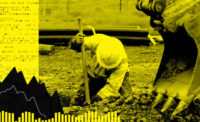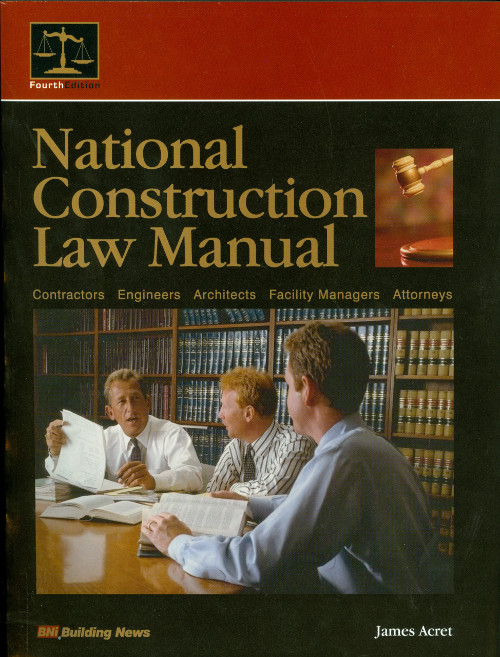Construction Firms, Unions Donate $156.6M to Midterm Candidates

With the federal midterm elections just a few weeks away and party control of both houses of Congress at stake, construction associations, companies and unions are making their late-in-the-game contributions to back favored candidates.
SOURCE: CENTER FOR RESPONSIVE POLITICS
With the federal midterm elections just a few weeks away and party control of both houses of Congress at stake, construction associations, companies and unions are making their late-in-the-game contributions to back favored candidates.
Industry and union spending has been heavy. Based on reports released as of Sept. 24, construction industry groups and companies have contributed a combined $58.7 million, and building trades unions spent $97.8 million, according to the Center for Responsive Politics (CRP).
For some groups’ officials, a key benchmark is how much their political action committees have raised. For the American Council of Engineering Companies’ PAC, “Right now, we’re on track to raise and spend more than we ever have,” says Steve Hall, vice president of government affairs. “We will definitely raise in excess of $2 million this cycle and spend most of that before the end of the year.” In 2013-14, the last midterm cycle, ACEC’s PAC raised $1.63 million, according to Federal Election Commission (FEC) data.
The Associated Builders and Contractors’ PAC raised slightly above $1.5 million as of Oct. 12, says Chris Singerling, ABC senior director of political affairs. He projects receiving another $20,000 or so by the cycle’s end, in line with its final 2013-14 level, FEC data show.
The Associated General Contractors of America’s PAC raised about $916,000 as of Oct. 15, AGC said. Officials expect the cycle-end total to be about $1 million, up from the last cycle’s $937,000.
Bechtel Group’s PAC had raised about $322,000 as of Sept. 30, according to FEC data. Jay Farrar, manager of Bechtel’s Washington, D.C., office, says the end-of-cycle total will be about $325,000 to perhaps $340,000.
Construction associations’ and companies’ spending continues to lean heavily Republican, with the GOP receiving 72% of their dollars, about even with 2013-14, according to CRP. On the other hand, 83% of building trades unions’ contributions are going to Democrats, down from 89% during the last midterms.
Among associations, 100% of ABC’s contributions this cycle are going to Republicans, CRP reports. AGC says its PAC has contributed to 189 Republicans and 16 Democrats. But ACEC’s dollars split 61% to GOP candidates, 39% to Democrats. Hall says, “When you’re a business association that cares about infrastructure investment, you find it very easy to support both sides.”
Bechtel’s PAC spending plan this cycle is about 54% to Republicans and 46% to Democrats, Farrar says. He notes that Bechtel has a reputation of being more of a Republican organization. “But we’re pretty even-handed, I think, all across the board, for the most part,” he says.
Bechtel’s six-member PAC board focuses on how candidates track with the company code of ethics. Then, Farrar adds, “The determining factor becomes how do they look at the issues we are interested in.” Topics include candidates’ support for commercial nuclear power and views on other energy issues, plus environmental stewardship and resilience. Infrastructure is on the list, too, including traditional and nontraditional financing tools.
For ABC, an incumbent must score at least 70% in meshing with its positions on key legislative votes, Singerling explains. A first-time candidate, who lacks a congressional vote record, must score 100% on an ABC questionnaire. Its PAC also gets contribution recommendations and requests about individual candidates from member firms, state chapters and its national office.
AGC says its PAC spending decisions favor candidates who agree with its legislative goals, including backing “cost-effective and practical” regulations, policies and directives; strong federal construction programs; and passing “a significant, long-term infrastructure bill.”
Construction unions’ contributions continue to tilt heavily toward Democrats, according to CRP calculations. At the carpenters’ union—the top spender among the building trades—79% of this cycle’s contributions have gone to Democrats. For the laborers’ union, Democrats’ share is 80%. At the bricklayers’ union, Democrats get 98%, and at the ironworkers’ union, they receive 96%. (Two major unions did not respond to ENR requests for comments.)
Environmental groups also are active in campaign spending, notably the League of Conservation Voters, which has contributed $2.4 million to candidates this cycle, according to CRP. Of that sum, nearly 99% has gone to Democrats.




